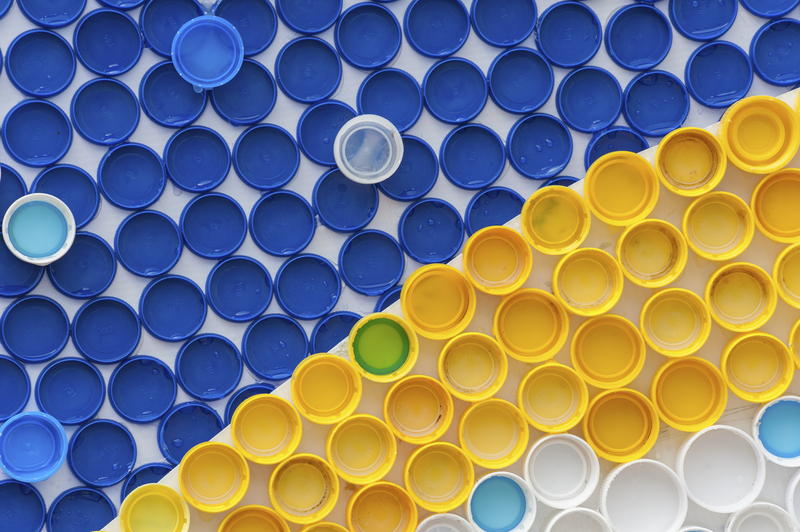What Happens to Pots and Pans After Recycling: A Comprehensive Guide
When your trusted pots and pans have finished their culinary service, you may wonder, what happens to pots and pans after recycling? This question is crucial as we increasingly seek sustainable solutions for household waste. In this article, we'll explore every stage of the recycling process for cookware, what becomes of your old kitchenware, and why properly recycling pots and pans matters for the environment.

Understanding Cookware Materials
Before diving into what happens to recycled pans and pots, it's important to recognize the most common materials used:
- Aluminum: Lightweight, durable, and widely used in both non-stick and traditional cookware.
- Stainless Steel: Resistant to rust and corrosion, making it popular for premium cookware.
- Copper: Known for excellent heat conduction, usually found in high-end products.
- Cast Iron: Prized for heat retention, heavy and often used for skillets and Dutch ovens.
- Non-stick coatings: Such as Teflon, applied over metals for easy cleaning and food release.
Recycling old pots and pans begins with their composition. Each type requires a different method of processing, which influences what happens next.
Why You Should Recycle Pots and Pans
Pots and pans might seem insignificant, but globally, tons of cookware are discarded annually. Without proper recycling, these metals and coatings end up in landfills, where they can take centuries to decompose. By choosing to recycle cookware, you:
- Reduce landfill waste
- Conserve natural resources (as metals can be infinitely recycled)
- Minimize the environmental impact of raw material extraction
- Support the circular economy
How to Prepare Old Cookware for Recycling
Recycling centers have specific requirements for accepting used pots and pans. Here are some preparation steps:
- Clean off food residues: Most facilities ask that items be as clean as possible.
- Remove non-metal parts: For example, plastic or wooden handles need to be taken off.
- Check for non-stick coatings: Some facilities don't accept Teflon or similar coatings - always check ahead.
- Sort by material: If you have multiple types, separate aluminum from steel or copper, if possible.
*Contact your local recycling center for detailed instructions to maximize acceptance of your items.*
The Journey: What Happens to Pots and Pans After Recycling?
1. Collection and Transport
The lifecycle of recycled cookware begins with collection. Once you deliver your old pans and pots to a recycling drop-off or scrap yard, they're aggregated with similar metal items. Some municipalities offer curbside pick-up for scrap metals, but most require a visit to a designated center.
2. Sorting and Categorization
At the recycling plant, pots and pans are sorted according to their metal composition. Magnetic systems help quickly separate ferrous metals (like most steels) from non-ferrous metals (such as aluminum and copper). Special attention is given to items with non-metal attachments or coatings.
- Aluminum cookware is separated for specific processing, as it requires different melt temperatures.
- Stainless steel and cast iron are sorted by alloy content and purity.
- Coated pans undergo extra cleaning or are sometimes rejected, depending on facility capabilities.
3. Removal of Non-Metal Components
Handles, lids with glass inserts, and any plastic or rubber components are manually removed or shredded away. For non-stick pans, the coatings may be burnt off or chemically stripped, as some centers now possess advanced filtration systems that minimize environmental risk from these processes.
4. Shredding and Size Reduction
All-metal cookware is then sent through industrial shredders to reduce them into small, manageable pieces. This maximizes surface area exposure for more efficient melting. The resulting metal scraps may be stored in large bins until a significant volume is ready to process.
5. Melting and Purification
One of the most crucial stages in cookware recycling is melting. The metal pieces are placed into massive industrial furnaces:
- Aluminum scraps melt at lower temperatures (around 660?C/1,220?F).
- Stainless steel and cast iron require much higher temperatures (1,300-1,600?C/2,370-2,910?F).
- Copper, with its unique properties, is usually sent to specialized facilities.
During melting, impurities and remaining non-metal residues float to the surface and are skimmed off. The purified metal can now be cast into ingots or billets.
6. Transformation into New Products
*Here comes the fascinating part - transformation!* The ingots created from your recycled pots and pans are not typically made into more cookware (though it's possible). Instead, they become raw material for:
- Automotive parts
- Bicycle frames
- Construction beams and pipes
- Electrical wiring (in the case of copper)
- Cans and packaging materials (common with recycled aluminum)
- Furniture and appliances
So, your old frying pan might one day contribute to a new car, a bridge, or even an airplane!
Benefits of Recycling Pots and Pans
Environmental Impact
Recycling metals from old cookware saves significant *natural resources*, reducing the need for mining and minimizing deforestation and water pollution. Aluminum recycling, for instance, uses up to 95% less energy than producing new aluminum from ore.
Economic Value
Recycling generates jobs at collection centers, plants, and manufacturing facilities using recycled metals. Raw materials from old kitchen pots and pans also cost less, helping to keep manufacturing and retail prices more affordable.
Reduction of Greenhouse Gases
Melting down existing metals produces far less greenhouse gas emissions compared to smelting ore. Every recycled pan helps shrink your carbon footprint.
FAQs: What Happens to Pots and Pans After Recycling?
-
Can I recycle non-stick pans?
Depends on local facility guidelines. Some accept non-stick cookware if the non-metal parts are removed. Others only accept uncoated metal. -
Can glass lids be recycled with the pan?
No, separate glass and metal. Glass must be recycled differently. -
Is it possible for recycled cookware to become new pots and pans?
Most often, recycled metal goes into industrial products, but some companies use recycled metal in new cookware lines. -
What if I can't recycle my pans locally?
Consider repurposing as planters, art, or donating to metal scrap artists before sending to landfill.
Alternatives to Recycling: Upcycling and Reusing Old Cookware
Not all pots and pans must end their journey at the recycling facility. Here are creative and eco-friendly options:
- Turn a large pan into a unique bird bath or planter
- Use rusted pans for rustic garden decor
- Donate serviceable items to charity shops or shelters
- Hand them to metal sculptors or community craftspeople for new art projects
- Transform lids into wall clocks or mirrors
*By considering upcycling, you reduce the demand for new products and extend the life of your trusted cookware.*
Challenges in Cookware Recycling
While the reuse and recycling of kitchenware is promising, there are challenges:
- Mixed Materials: Many pots and pans combine metals with plastics, glass, or wood, making separation labor-intensive.
- Non-stick Coatings: Teflon and similar coatings can create environmental concerns during melting.
- Lack of Local Facilities: Not all recycling centers are equipped for cookware, particularly old non-stick pans.
These challenges make it crucial to check with your local facilities before dropping off your old kitchenware.

Tips for Responsible Cookware Disposal
- Research: Find out what materials your local recycling center accepts.
- Prepare: Disassemble cookware and clean as required.
- Donate: If items still function, consider charities, friends, or second-hand shops.
- Repurpose: Get creative! Many online ideas exist for upcycling old cookware.
- Recycle: As a last resort, follow facility instructions for proper metal recycling.
Conclusion: The Lasting Impact of Recycling Pots and Pans
When it comes to what happens to pots and pans after recycling, the journey is more fascinating than you might expect. Most discarded pans and pots find new life as part of our infrastructure, consumer goods, or even more cookware. By understanding the full cycle--from collection to melting to product transformation--you make informed decisions that benefit both the planet and your local economy.
The next time you're ready to retire a battered skillet or dented saucepan, remember: your old pots and pans have the potential to become part of something much bigger. Through responsible recycling, you're contributing to a cleaner, more resource-efficient world--one pan at a time.
If you found this guide helpful, share it to help others learn what happens to pots and pans after recycling, and join the movement toward smarter, greener living!